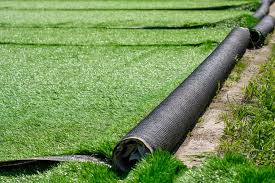
Innovative Landscaping: Integrating Grass into Your Driveway Design
A grass driveway is also referred to in the form of grass grid or a turf driveway, is a unique and sustainable alternative to traditional asphalt driveways. It is a way to combine the benefits of a traditional driveway with the aesthetic appeal of a lush, grassy surface. Here’s everything you need to know about this sustainable choice.
1. What is a Grass Driveway?
The grass driveway A grass driveway is a type of permeable paving system that allows grass to grow through a grid-like structure. The grid is generally constructed from concrete or plastic, which supports the cars’ weight, while letting water pass through it and feed the grass. This results in a visually appealing and environmentally friendly solution that minimizes runoff and promotes more efficient water filtration.
2. Benefits
Environmental Impact Environmental Impact: One of the most significant benefits that comes with grass driveways lies in their environmental benefits. They help reduce runoff from stormwater and help to stop soil erosion and contribute to the reduction in the heat island effects that are common to urban areas, as the grass provides natural cooling.
Aesthetic Appeal: Grass driveways offer a unique and attractive design, blending seamlessly into your garden or lawn. They can improve the appearance of your property by creating a green natural look that contrasts with traditional asphalted surfaces.
Durability and Maintenance The latest grass driveways are built to withstand heavy traffic and extreme weather conditions. They require little maintenance when in comparison to traditional driveways. The regular mowing of grass and occasional weeding is usually all that is required.
Cost-Effectiveness: While the initial installation might cost more than conventional alternatives to paving, the longer-term costs can be lower. Driveways made of grass generally don’t require resurfacing and reduce the requirement to install drainage system.
3. Installation Process
Planning the site: The area where the driveway will be constructed must be prepared. This includes clearing the area, leveling the ground, and making sure that the drainage is in order.
Base Layer: A gravel or crushed stone base is laid to create a stable foundation. This layer helps with drainage and creates a solid foundation for grid systems.
Grid Installation Grid Installation: The grid, typically constructed from tough concrete or plastic is laid on top of the base layer. This grid structure supports the weight of vehicles, while it allows grass to grow through.
Grass Planting: Once the grid is in place and the grid is in place, it is then grass can be sown, or spread as sod. It is essential to select the grass one that’s suitable to your climate and level of foot and vehicle traffic.
4. Considerations
Climate and Grass Type Choose a grass kind that thrives in your climate and can take the strain of traffic. Get advice from local experts on landscaping to make sure you choose the most suitable grass to meet your requirements.
The load bearing system: Make sure the grid system you choose is able to handle the weight of the vehicles who will use the driveway. The durability and quality of the grid are important factors.
Regular Maintenance: While grass driveways are low-maintenance however, they require some maintenance. The regular trimming, the weeding, and reseeding every now and then will keep the driveway looking good and function.
In summary the conclusion, a grass driveway is a stylish and eco-friendly alternative to traditional pavements. Through combining aesthetic appeal and practical benefits, it offers an eco-friendly solution that improves both your home and surroundings.



